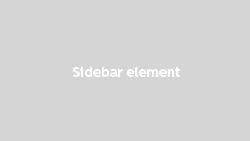The Nevis International Insurance Ordinance 2004
Introduction
Prior to 2004 Nevis allowed reinsurance companies to be established in the territory as Nevis Business Corporations without any specific legislation relating to their regulation.
In 2004 the Nevis Government, as part of an overall policy of ensuring that the jurisdiction has a regulatory regime and regulatory standards in keeping with international best practices, enacted The Nevis International Insurance Ordinance.
The Nevis International Insurance Ordinance 2004 provides for the general regulation of the international insurance arena and also allows general and captive insurance companies to be formed in addition to the already established reinsurance companies.
Upon its enactment The Nevis International Insurance Ordinance required that all reinsurance companies previously operating from within Nevis either cease operations or register with Nevis Financial Services Department and apply for licensing under the Ordinance within 6 months of the enactment of the Ordinance.
The Nevis Insurance Ordinance 2004 is a very modern insurance legislation, with a number of aspects that make operating an international insurance company from Nevis easier than most domiciles, and without introducing the additional costs that many of the other jurisdictions’ laws may dictate.
For example the Act allows for:
- Protected cell companies to be established;
- Low minimum capitalization levels (from $25,000 depending upon the nature of the business);
- Pragmatic solvency requirements;
- No requirement of Local directors;
- No requirement for local banking;
- Low licensing fees;
- Tax neutral jurisdiction.
Nevis does, however, require that an international insurance company licensed in Nevis employ a locally licensed insurance manager, and an auditor approved by Nevis Financial Services Department (NFSD).
Regulation
NFSD is the body that regulates the whole financial services sector in Nevis. The insurance division of NFSD is actively working toward developing Nevis as the primary domicile for mid market insurance captives within the Eastern Caribbean.
NFSD wherever possible, seeks to work with prospective captive owners and managers to make the process of establishing a captive as easy as possible whilst always respecting the rule of law within Nevis and internationally.
The main regulatory features are:
- Insurer must be registered;
- Company names are subject to approval;
- Minimum of two directors who are natural persons;
- Flexibility on allowable assets;
- Annual audit of all insurers;
- Actuarial valuation every three years, of insurers carrying on long term business.
Captive Insurance
A captive insurance is basically an insurance company that insures the risk of its parent company. The Nevis International Insurance Ordinance 2004 defines Captive Insurance as ‘insurance business where the insured is a parent or affiliated company of the registered insurer or is a person in respect of whom the registered insurer is authorized by the registrar to provide insurance.’
An offshore captive insurance company therefore is a form of self-insurance where a company, group of companies or professionals, sets up an insurance company to self-insure the normal expected loss.
It is a subsidiary company, wholly owned by a non-insurance company, that underwrites the insurable risks of its parent company or its related or associated companies.
Why Captive Insurance
- To minimize costs by the elimination of a large percentage of traditional insurance company overhead;
- To reduce risk by selecting only quality insureds known to each other (as in the case of some medical malpractice association captives);
- To insure risks which would otherwise be uninsurable or cost prohibitive;
- Access to the re-insurance market;
- The reduction of Government regulations and restrictions by seeking out a favorable jurisdiction for the registration of the company;
- The reduction of taxes by domiciling the company in a low tax jurisdiction.
Types of Insurable Risk
The captive insurance company may insure almost any form of insurable risk, however the most common types of insurance cover effected through captives are:
- Product liability coverage;
- General property and casualty coverage;
- Medical malpractice liability;
- Workers compensation;
- General property (usually minor claims);
- Loss of profits;
- Marine-cargo and hulls;
- Employee benefits;
- Group pension plans;
- Casualty;
- Products recall;
- Product liability;
- Pollution liability;
- Expropriation of assets;
- Nuclear explosion;
- Currency devaluation
Conclusion
Nevis is currently moving at a pace to develop as a market for small and medium sized captive insurance companies both on a reinsurance and direct writing basis for “mid-market” parents that have previously considered captives the sole domain for Fortune 1000 companies.


